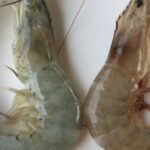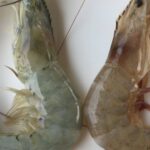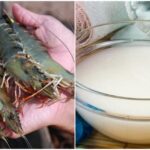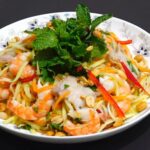Shrimp is a nutrient-rich food, especially high in calcium, and is a common delicacy in many households. Wild-caught shrimp stands out for its naturally sweeter, firmer meat and superior flavor compared to its farmed counterpart.
However, not everyone knows how to differentiate between the two types of shrimp. In reality, distinguishing between them is simple, and with a few tips from your shrimp vendor, you’ll easily be able to tell them apart.
How to Distinguish Between Farmed and Wild-Caught Shrimp
When shopping for shrimp, many people are unsure how to select the best quality shrimp, often ending up with inferior products.
Wild-caught shrimp tends to be more expensive than farmed shrimp, so some dishonest sellers may try to pass off farmed shrimp as wild-caught to increase their profits. To avoid being cheated, you can learn how to differentiate between the two types of shrimp using the methods described below.
Firstly, farmed shrimp usually have darker shells, less firm meat, and lack the natural sweetness of wild-caught shrimp. In contrast, wild-caught shrimp have brighter shells, firmer meat, and offer a naturally sweeter taste experience.
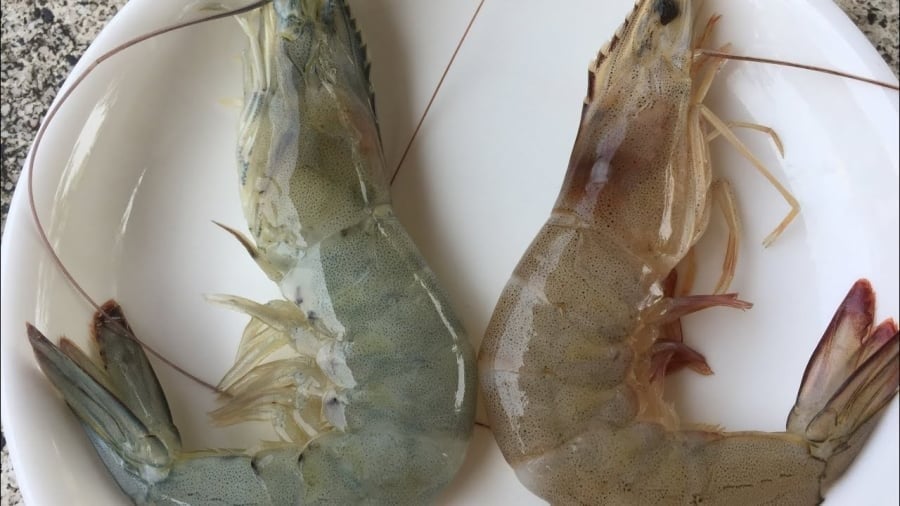
To choose the freshest wild-caught shrimp, look for shrimp that are actively swimming and jumping, with hard, shiny shells and vibrant colors. Their legs should be intact, and the meat should be firmly attached to the shell.
Avoid shrimp with dull white, cloudy shells, blurry or slightly pink eyes, stiff and straight bodies, uneven sizes, or loose heads. Also, be wary of shrimp with slime or black legs, even if they are offered at a bargain price.
If you’re buying pre-cooked shrimp, inspect the tails to ensure freshness. Straighten the shrimp and examine the gaps between the shell and meat under good lighting. If there are wide gaps, the shrimp may not be fresh or may have been overcooked or previously frozen.
Delicious Shrimp Recipes
Garlic Butter Shrimp
Garlic butter shrimp is a favorite among seafood enthusiasts due to the perfect combination of buttery richness and garlic’s distinctive aroma. These elements elevate the shrimp’s appeal and make it a true delight for the senses. The preparation is quite simple and easy to execute. If you’re looking for a tasty shrimp dish, follow these steps:
Step 1: Clean 500 grams of large shrimp, removing the beard and legs. Then, pan-fry the shrimp until both sides are evenly cooked.
Step 2: In a separate pan, melt 5 tablespoons of vegetable butter and add a clove of finely chopped garlic. Season with half a spoon each of sugar, salt, and pepper. Once the spices are dissolved, add chopped chives and chili.
Step 3: When the garlic butter sauce thickens, turn off the heat and pour it over the fried shrimp. This dish is best served immediately.
Coconut Steamed Shrimp
Coconut steamed shrimp is an ideal dish for all ages, especially children, thanks to its mild and delicate flavor. This recipe combines the sweetness of shrimp with the creamy richness of coconut, making it a family favorite. Here’s how to prepare it:
Step 1: Prepare the shrimp by removing the beard, legs, and black thread from the back, then rinse thoroughly.
Step 2: In a pot, boil the water from one coconut, adding one sliced shallot and a little seasoning.
Step 3: Add 400 grams of prepared shrimp and boil for about 2 minutes until they turn red, then turn off the heat.
Step 4: Garnish the shrimp around the coconut mouth and serve.
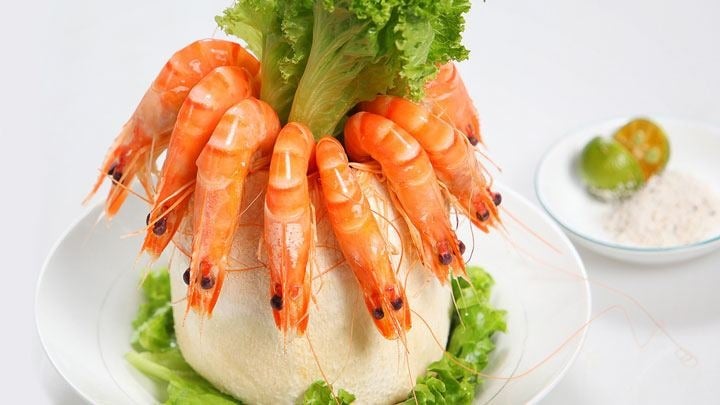
Soy Sauce Steamed Shrimp
Soy sauce steamed shrimp is a unique and flavorful dish perfect for family meals. It’s easy to prepare and delivers a rich, savory taste that’s sure to please. Here are the steps to make it:
Step 1: Prepare the shrimp by removing the black thread from the back and rinsing thoroughly.
Step 2: Sauté chopped shallots until fragrant, then add shredded king oyster mushrooms and mix well. Season with sugar, vinegar, and soy sauce, bringing it to a boil before turning off the heat.
Step 3: Using a spoon, spread the mixture onto the backs of the shrimps, which have been halved lengthwise. Place the shrimp in a steamer and steam over medium heat for about 10 minutes, or until they turn orange-yellow. Turn off the heat and serve.
The Ultimate Guide to Telling Farmed and Wild Shrimp Apart: Insider Tips and Tricks
“For many, distinguishing between farmed and wild-caught shrimp can be a tricky endeavor. The subtle differences in appearance can be deceiving, often leading to confusion. However, it is important to note that there are significant disparities in terms of quality and nutritional value between the two sources, which is why understanding the distinction is crucial for consumers.”
The Ultimate Guide to Telling Farmed and Wild Shrimp Apart: A Shrimp Seller’s Tip that Anyone Can Do
“Choosing the right shrimp for your family’s meal can be a tricky endeavor. With years of experience in the seafood industry, we are here to share a simple secret to help you distinguish between farmed and wild-caught shrimp. This knowledge will ensure you always select the freshest and most delicious shrimp for your table.”
The Ultimate Guide to Crispy Fried Shrimp: A Secret Ingredient for that Crunch!
With this mouth-watering recipe for crispy fried shrimp, you’ll be able to create a delicious and addictive dish that will have everyone asking for more. The shrimp are coated in a light and crispy batter, creating a texture sensation that’s hard to resist. This dish is a must-try for any seafood lover!

























